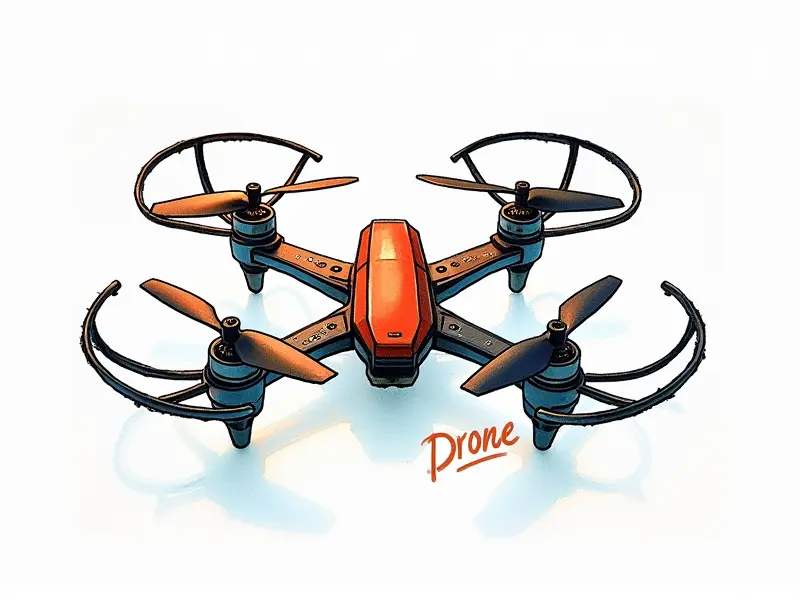What is GPS on RC quad?

Why Use GPS with Your RC Quadcopter?
GPS (Global Positioning System) technology has revolutionized the way we interact with remote-controlled (RC) quadcopters. By integrating GPS into your RC quad, you unlock a myriad of benefits that enhance flight performance and user experience.
Benefits of Using GPS in RC Drones
- Autonomous Flight: GPS enables your drone to fly autonomously, allowing it to take off, land, and navigate predefined routes without constant manual control. This feature is particularly useful for aerial photography and videography.
- Fly Home Function: In case of battery depletion or signal loss, the "Fly Home" function ensures your drone returns safely to its starting point.
- Precision Navigation: GPS provides accurate positioning data, enabling precise navigation and waypoint tracking. This is invaluable for surveying large areas or conducting inspections in remote locations.
How Does GPS Work in RC Quads?
GPS works by receiving signals from a network of satellites orbiting the Earth. These satellites transmit time-stamped data, which your drone uses to calculate its exact location on the planet's surface. The GPS module within your quadcopter processes this information and provides real-time positioning updates.
Top GPS Functions for RC Quad Pilots
- Return-to-Home: Automatically returns the drone to its starting point if it loses signal or battery power.
- Waypoint Navigation: Allows pilots to program specific coordinates, enabling the drone to fly precise routes autonomously.
- Altitude Hold: Maintains a constant altitude, ensuring stable flight even in windy conditions.
Understanding GPS Features in RC Drones
Modern GPS modules offer advanced features such as real-time tracking, telemetry data transmission, and compatibility with various flight control systems. These features enhance the drone's functionality and reliability during complex missions.
Setting Up GPS on Your RC Quad
To set up GPS on your quadcopter, follow these steps:
- Install the GPS Module: Carefully mount the GPS module onto your drone's frame. Ensure it is securely fastened and does not interfere with other components.
- Connect to Flight Controller: Connect the GPS module to your flight controller using the appropriate wiring harness or connector.
- Calibrate Compass: Use a compass calibration tool or follow manufacturer instructions to ensure accurate heading data.
Advanced GPS Functions in RC Drones
Some high-end GPS modules offer advanced features such as:
- Satellite Tracking: Provides detailed information on satellite visibility and signal strength, helping to optimize flight performance.
- Geofencing: Allows you to define restricted areas where the drone cannot fly, enhancing safety and compliance with regulations.
Choosing the Right GPS Module for Quads
Selecting the right GPS module depends on your specific needs. Consider factors such as accuracy requirements, desired features, and compatibility with your flight controller. Popular options include:
- Bosch BMP180: Offers high precision altitude measurements.
- MikroTik GPS-3M: Provides reliable satellite tracking and robust signal reception.
GPS vs. FPV: Which is Better for Quads?
The choice between GPS and First-Person View (FPV) depends on your intended use case:
- GPS: Ideal for autonomous missions, waypoint navigation, and maintaining stable flight.
- FPV: Best suited for real-time control, racing, and aerial photography where visual feedback is crucial.
Enhancing Flight Stability with RC Quad GPS
GPS significantly improves flight stability by providing accurate altitude hold and heading data. This ensures smoother, more controlled flights even in challenging weather conditions.
Troubleshooting Common GPS Issues in RC Quads
- No Signal: Check for obstructions blocking satellite signals or move to an open area with better visibility.
- Inaccurate Positioning: Calibrate the compass and ensure proper installation of the GPS module.
Conclusion
The integration of GPS technology into RC quadcopters offers numerous benefits, from enhanced flight stability to autonomous navigation capabilities. By understanding how GPS works in quads and selecting the right module for your needs, you can unlock new levels of performance and reliability in your drone operations.

